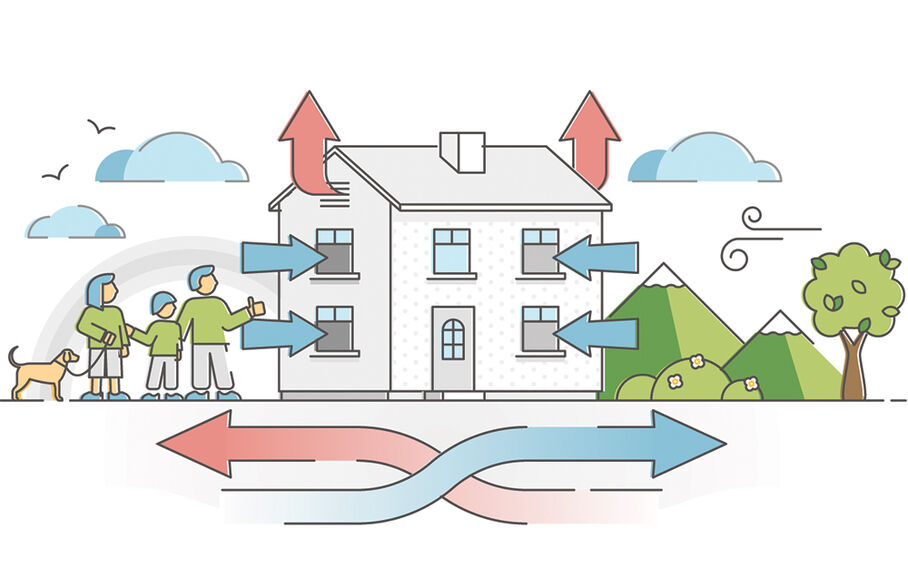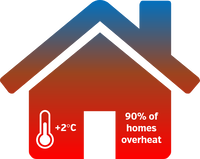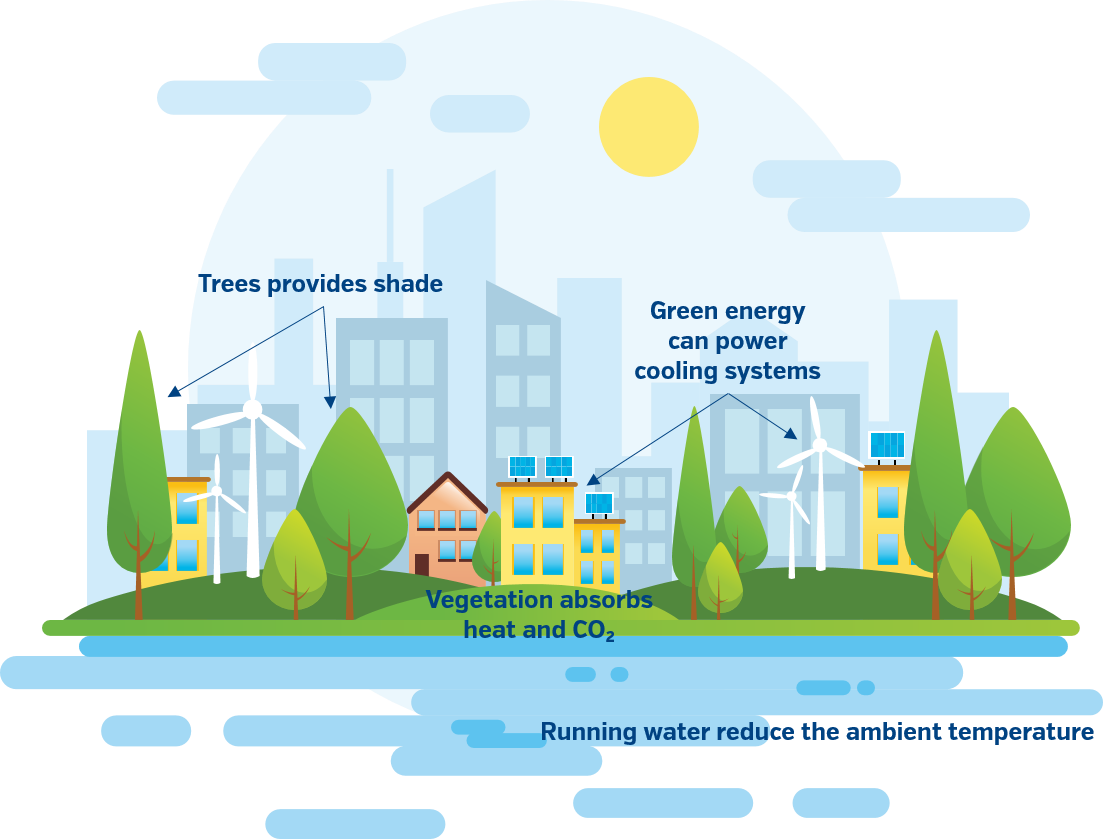
As the UK finishes off summer 2023 with another heatwave, it's a reminder of those we experienced earlier this year. Unfortunately, this summer marked the hottest day on record for the global average temperature. The impacts of climate change are becoming more tangible, and while house builders can contribute to mitigating these effects, one significant difference lies in the comfort of our homes. The UK ranks among the top three countries predicted to experience the largest increase in average temperatures.

The realities of global warming are beginning to affect the comfort and safety of everyday people. In a scenario where the planet's temperature increases by 2°C, an astonishing 90% of existing UK homes, as of 2022, will be susceptible to overheating, with 55% of homes already experiencing overheated bedrooms during hot weather. A key factor in this predicament is that UK homes have historically been designed to minimize the impact of cold winters rather than hot summers. However, one of the advantages of new-build houses is their efficiency and insulation, which help maintain warmth and cosiness during winter months. Fortunately, insulation addresses both challenges; insulating materials are intentionally designed to hinder heat conduction. While they retain warmth in winter, they can also repel excessive heat during summer.
Nevertheless, various other aspects of housing design significantly influence how our homes absorb and retain heat. Windows are a crucial factor in this equation. Those who own greenhouses or have sat in conservatories during July understand that maximising glass maximises heat. Therefore, limiting windows on south-facing walls presents a straightforward solution to prevent heat infiltration. Building Regulations were updated in 2021 to incorporate a maximum window surface area relative to floor space, thereby curbing these heat-trapping effects.
Inspiration can also be drawn from Mediterranean homes, which are more familiar with these issues. Increasing the use of shutters or external blinds that completely block light, as seen in the whitewashed homes of the continent, effectively reflects rather than absorbs heat. Furthermore, the UK's climate allows for harnessing wind through improved ventilation. Windows that open, as well as vents and fans, facilitate air circulation, ultimately reducing temperatures.
An apparent solution to overheating might involve increasing the utilisation of air conditioning. However, as long as we remain dependent on fossil fuels for energy, this approach risks perpetuating a vicious cycle. Homes equipped with solar panels could harness solar energy to maintain a cooler indoor environment. Nonetheless, experts suggest that even if global temperatures increase by 2°C, air conditioning should only be necessary in 22% of UK homes. Moreover, air conditioning contributes to a factor that exacerbates overheating: the urban "heat islands" phenomenon, particularly prevalent in densely populated areas.

Surfaces like asphalt roads, pavements, and closely situated buildings readily absorb heat. This means urban areas like London can be up to 10°C warmer than their rural surroundings. The lesson here is to capitalise on the natural cooling effects provided by environmental features. Trees offer shade to sunny windows and slightly cool the atmosphere, while grass provides a cooler ground temperature compared to paving or AstroTurf. Water features also aid in reducing ambient temperatures. Even buildings themselves can take advantage of natural materials; grass roofs and living walls serve as insulation while helping to lower ambient temperatures, much like thatch roofs.
In our collective endeavour to combat climate change, it's essential to consider measures that address the impacts we're already facing. Although creating an entire community of grass-covered homes might not be a universal solution to overheating, thoughtful layouts and landscaping can significantly enhance the comfort of occupants. Home designs evolve in response to changing lifestyles, and addressing overheating should be no exception.
If you're a developer or housebuilder searching for your next project, LSL Land & New Homes can guide you on your journey, from land acquisition to sales.
0845 340 2940
Sources:
Guardian - Monday was hottest day for global average temperature on record, as climate crisis bites
National World - The UK's homes are built to keep in the heat - but study says climate change is going to make that a problem
Climate Change Committee - Addressing overheating risk in existing UK homes
Wired - The UK Is a Hot Country. It’s Time to Build Like It
New Scientist - How can the UK keep homes cool without air conditioning?
Which? - Insulation – why you should still think about it during summer
Architectural Digest - Green Roofs: Everything You Need to Know About These Lush and Vibrant Canopies
Rightmove - How Long Does A Thatched Roof Last And How Much Do They Cost?

Our experienced land & new homes experts can provide you with the knowledge & expertise that you need.



